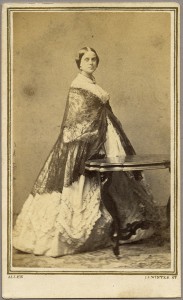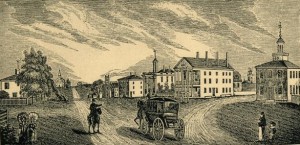
Boston, Saturday, 18 May 1861: These two or three clear days have helped Morris[2] a good deal – he drives often, and walks twice a day with me. I shall be known as “the woman that follows the drill” ere long, for he trudges after each company all over the parade ground [on Boston Common], and his military accoutrements attract no little attention to his poor pale face…
A report is very current to-day that Gen.l Beauregard[3] has died of wounds rec’d at the attack on Sumter. Somebody has heard somebody’s letter read, giving an acct. of his funeral!! Continue reading “The dear old lady”






